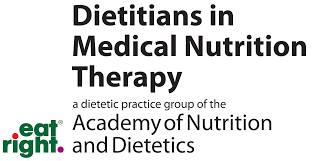What is gastroparesis?
Gastroparesis, also called delayed gastric emptying, is a disorder that slows or stops the movement of food from the stomach to the small intestine.
Common symptoms of gastroparesis include: nausea, a feeling of fullness after eating only a small amount of food, vomiting undigested food — sometimes several hours after a meal, gastroesophageal reflux (GERD), abdominal pain, bloating and a lack of appetite.
The severity of gastroparesis varies from person to person. It is important to find which foods work best for you.

Keep in mind gastroparesis is not a static condition, meaning your symptoms can vary from week-to-week or even day-to-day. During a “gastroparesis flare” you may experience a period of time where all you can take is liquids.
Getting started on a diet for gastroparesis
Certain types of foods and nutrients, such as fat and fiber, take longer to digest and further delay stomach emptying, exacerbating symptoms. A lower fat, lower or modified fiber diet with small frequent meals is generally recommended to reduce gastroparesis symptoms, though tolerance level varies from person to person. Also, soft-textured, ground, pureed and liquid foods may work better than solid foods.
Due to high fiber content, fresh fruits and vegetables may be difficult to tolerate, however there are ways to make these foods easier to digest.
These tips provide ways to prepare and use fruits and vegetables in your meals so you can get all the nutrients that your body needs while minimizing discomfort.
- Peel fresh fruits and vegetables with thick skins to reduce fiber.
- Try canned fruits in natural juices or water. These are also peeled and will be softer in texture.
- Steam peeled vegetables until fork-tender to soften the fiber. Limit portion to about ½ cup to start.
- Make mashed or pureed veggies by steaming, adding broth and then blending. This can be done with cauliflower, carrots, parsnips, squash, spinach, turnips and potato/sweet potato.
- Jarred roasted red peppers can be pureed or chopped and mixed into hummus, mashed potatoes, mashed cauliflower, pasta, soups or eggs.
- Add cut up vegetables to soups. These will be come soft and easy to digest. Carrots, chopped celery, peeled sweet potato, butternut squash, mushrooms, canned diced tomatoes or zucchini are good choices.
- Try fruit and vegetable smoothies.
- No time to blend your own smoothie? Try store bought bottled smoothies such as Naked Juice® and Bolthouse Farms®. Ideally choose flavors that have added protein to make it a more balanced mini meal or snack.
- Blend fruit with Greek yogurt, cottage cheese, or silken tofu for breakfast or a snack.
- Try fruit and veggie pouches when on the go. There are several options available:
- Dole® Fruitocracy™ Squeezable Fruit Pouch.
- Mott’s® Snack & Go Pouches.
- Plum Organics® Fruit and Vegetable Pouches.
- Sprout® Organic Baby Food Pouches.
- Purchase or make pureed vegetable soups such as carrot ginger or butternut squash soup.
- Pacific® and Imagine® brands have healthy pureed vegetable soup options.
- Choose 100% fruit and vegetable juices. Avoid juices with added sugar and high fructose corn syrup.
- Use of fruit and vegetable purees in baked goods. Substitute applesauce, pumpkin or squash for oil in baking. The ratio for these three is typically 1:1. So if the recipe calls for 1/4 cup of oil, use 1/4 cup of applesauce.
- Add in peeled and shredded zucchini or shredded carrots to muffins, and breads.
- Peel, slice, and bake apples, peaches or berries sprinkled with cinnamon.
Written by

Emily Haller, MS, RDN, and Lauren Van Dam, MS, RDN
Reviewed by the DIGID Upper Gastrointestinal workgroup ©2021

Emily Haller, MS, RDN, and Lauren Van Dam, MS, RDN
Reviewed by the DIGID Upper Gastrointestinal workgroup ©2021




